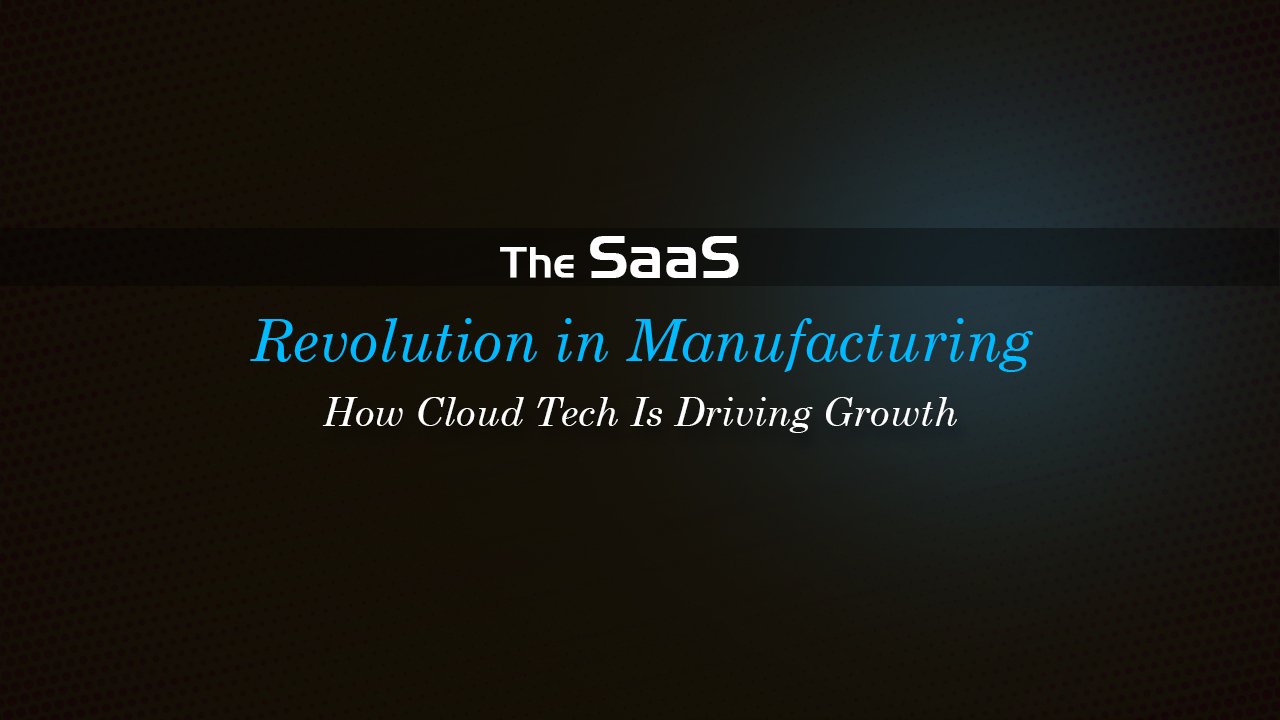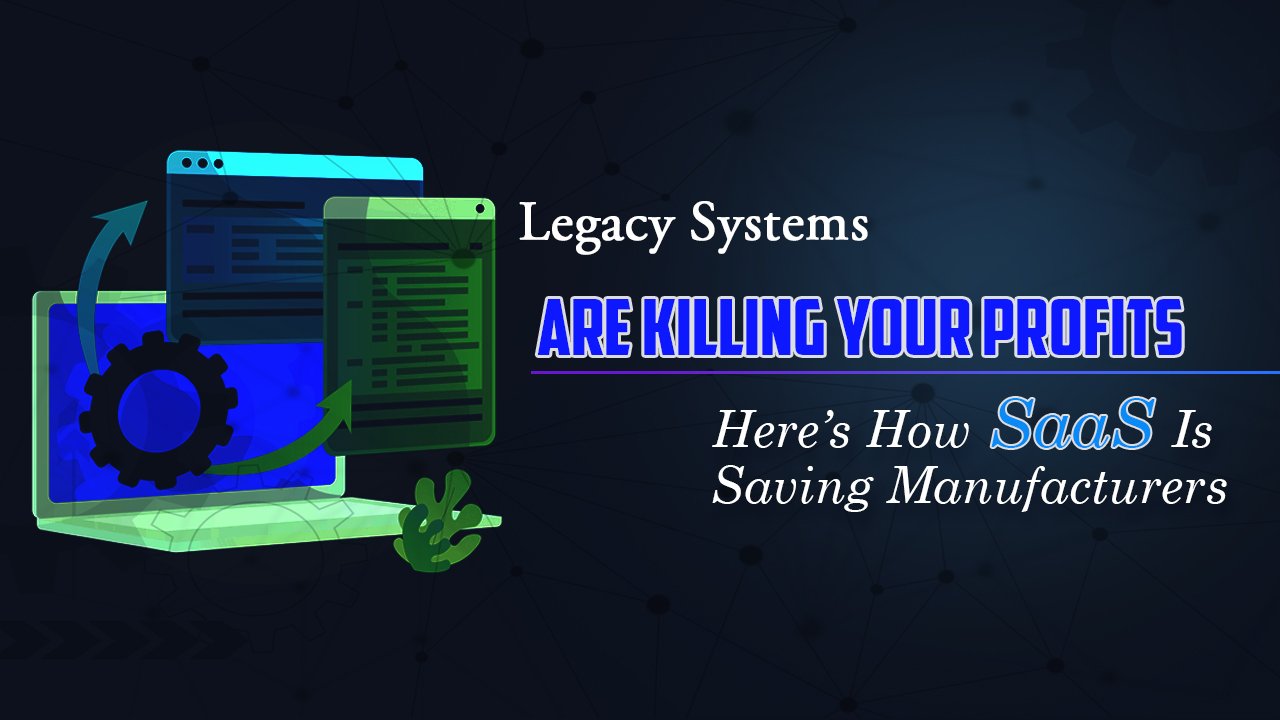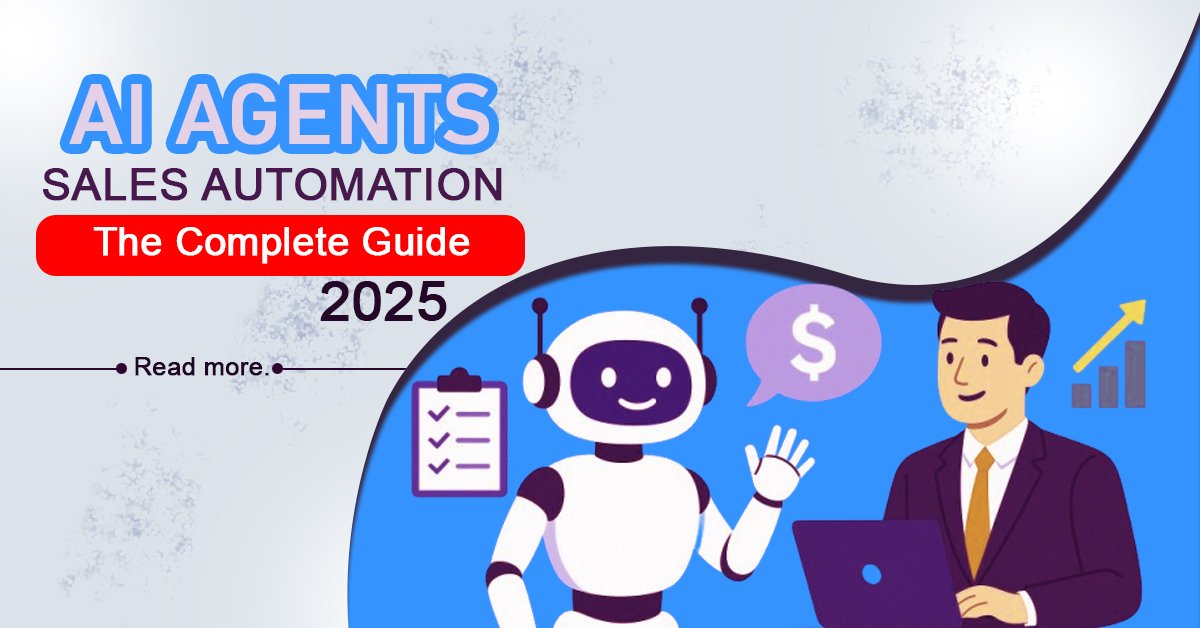Golden Entry: Crossroads of Manufacturing
The legacy systems-strained, slow, and expensive that fail to keep up with what’s modern and progressive-ad miss out on Software-as-a-Service (SaaS), a dreamy innovation promising cost efficiency, scalability, and the ability to change conventions of manufacturing globally.
With SaaS, manufacturers no longer need to pay large sums upfront for the IT infrastructures but are transferred to subscription and cloud hosting, making software available anywhere-as if they have cars. The end result: more rapid decisions, continuous collaboration, and competitive advantage in an increasingly digital industry.
This blog will bring to light how SaaS is transforming the traditional ways in manufacturing-from ERP to CRM to AI-enabled predictive analytics- and why some manufacturers who have foresight are coming on board.
Why SaaS is Disrupting Conventional Manufacturing
SaaS appeals primarily to manufacturers for two main reasons:
- Reduction of Cost and Predictable Expenses
- Enhanced Agility and Scalability
Cost Reduction and Predictable Expenses
Real assets such as servers, licenses, and IT personnel become a burden for traditional manufacturing applications. SaaS is an OpEx model; the costs are spread over time rather than up front.
- No hardware costs upfront: Cloud-based solutions do not require expensive servers on site.
- Lower maintenance costs: The SaaS provider manages updates, security, and troubleshooting.
- Pay-as-you-go pricing: Scale software use according to demand.
Stat Alert: As per Gartner, adoption of SaaS reduces IT costs for an adopting organization by upto 15-20% as compared with the traditional software model.
Enhanced Agility and Scalability
Market demands change; therefore, the manufacturers should have real-time adaptation within. SaaS enables:
- Quick deployment-new tools can be rolled out in days, instead of months.
- Easy scaling-add or reduce users and features as required.
- Remote access-teams can work together from anywhere.
Case Study: A mid-sized producer of automotive parts used a SaaS inventory management system that resulted in a 30% decrease in stockouts, in addition to cutting warehousing costs.
Core SaaS Applications in Manufacturing
SaaS really is coming to manufacture different functions in
Enterprise Resource Planning (ERP).
Real-time visibility across production, inventory, and finances, on demand via cloud-enabled ERP.
- Dissolving silos within data-answering needs for shop floor-to-executive connections.
- Forecast improvement-optimizing supply chain planning through AI-driven analytics.
Expert Insight: “Cloud ERP allows manufacturers to make data-driven decisions instantly, reducing downtime and waste” – John Doe, Manufacturing Tech Analyst.
Customer Relationship Management (CRM)
SaaS CRM enhances customer interaction by:
- Streamlining sales pipelines-automated lead tracking and follow-up.
- Improving service response times-centralized customer data enabling faster resolution of issues.
Example: A textile manufacturer increased customer satisfaction levels by 25% by adopting a SaaS CRM for the real-time tracking of orders and complaints.
Supply Chain Management (SCM)
Cloud SCM optimizes logistics, procurement, and supplier collaboration.
- Demand forecasting-AI predictions of inventory needs.
- Supplier portals-real-time communication for faster communication.

Merits of SaaS for Manufacturing
SaaS provides more than just cost savings to businesses but operational excellence:
✔ Increased Collaboration & Communication
- Updates in real-time- all teams can have access to the same data at the same time.
- Transfer cloud documents-all version control is now made so that errors would be eliminated.
Data Security & Compliance
- Enterprise-grade encryption-it protects sensitive house IP and customer data.
- Regular audits by security-pretty much every security has to comply with ISO 27001, GDPR.
Completed Processes and Automation
- Less manual work to performance-online workflows were fast enough to shorten working time.
- Increases productivity-according to studies, SaaS adoption leads to up to a 40% increase in productivity.
Overcome Challenges in SaaS Adoption
Absolutely, SaaS is very great, but manufacturers should be prepared to face the following:
1. Integration with Legacy Systems
- Choose API-friendly SaaS-embracing legacy systems.
2. Data Migration & Security Concerns
- Partner trusted providers-soc2 compliance and encryption of information are sought.
3. Employee Training & Change Management
- Spending on onboarding-smooth transition can be done through guided training.

SaaS Future in Manufacturing
Adjoined by the application of:
AI & Machine Learning Integration
- Predictive Maintenance-words reduce unplanned downtime even more.
Smart production scheduling-as ai defines optimized workflows.
IoT & Edge Computing
- Live sensor messages-keep equipment health in check.
- Fast decision-making-power “edge computing” can process data locally.
Vertical SaaS Solutions
- Industry-specific tool-automotive, pharma, etc.
FAQs: SaaS in Manufacturing
Is SaaS safe for sensitive manufacturing data?
Yes: Very respectable SaaS providers apply end-to-end encryption, two-factor authentication+, and ongoing audits.
How much would SaaS cost compared to on-premise solutions?
SaaS is around 30 to 50 percent cost effective since it eliminates initial hardware costs and uses a subscription-based pricing mechanism.
How long does SaaS implementation take?
Precise-to-days to weeks traditional software takes months for implementation.
Can SaaS integrate with existing systems?
Yes. Most SaaS offer APIs to facilitate integration into existing systems.
Conclusion
The SaaS revolution is upon us, and manufacturers embracing this transformation stand to gain:
✔ Reduced costs
✔ Increased agility
✔ Enhanced security and automation
Ready for a change in operations? Select SaaS solutions today and stay ahead of the game in digital manufacturing.







